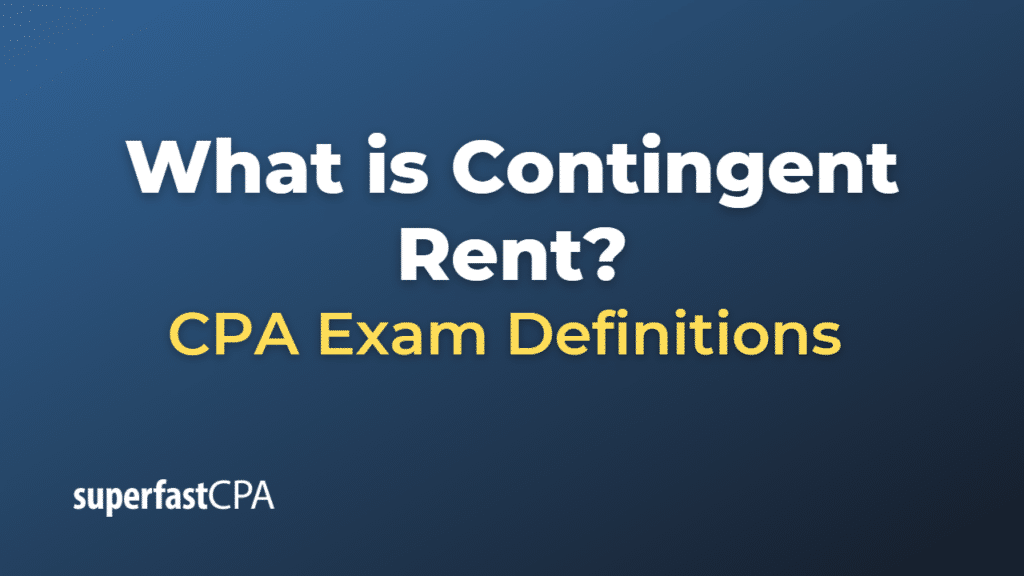Contingent Rent
Contingent rent, also known as variable rent or percentage rent, is a rental payment structure in which a tenant’s rent is determined based on a specific variable, such as a percentage of the tenant’s sales or revenue, instead of a fixed amount. This type of rent arrangement is common in retail leases, where the tenant’s rental payments are linked to their business performance. Contingent rent provides a flexible rental structure that can benefit both landlords and tenants, as it aligns the rental payments with the tenant’s ability to pay and the landlord’s interest in the tenant’s success.
In a contingent rent agreement, a tenant usually pays a base rent, which is a fixed amount, and an additional variable rent that is calculated based on the agreed-upon variable, such as a percentage of the tenant’s sales. The variable rent may be subject to a minimum or maximum threshold, or it may be calculated using a tiered or stepped structure that adjusts the percentage rate based on different levels of sales or revenue.
For example, a retail store in a shopping mall may have a lease agreement that includes a base rent of $5,000 per month and a contingent rent of 5% of the store’s monthly sales above $100,000. If the store generates sales of $150,000 in a particular month, the contingent rent for that month would be $2,500 (5% of $50,000). The total rent payable for the month would be $7,500 ($5,000 base rent + $2,500 contingent rent).
Contingent rent agreements can help landlords attract and retain tenants by offering rental structures that are more closely aligned with the tenants’ business performance and ability to pay rent. In turn, tenants may benefit from lower rental payments during periods of lower sales or revenue, while sharing a portion of their success with the landlord during periods of higher sales or revenue.
Example of Contingent Rent
Let’s consider an example of a contingent rent agreement between a landlord and a tenant operating a clothing store in a shopping mall.
Lease Agreement Terms:
- Base rent: $6,000 per month
- Contingent rent: 7% of the store’s monthly gross revenue above $80,000
In this example, the clothing store is required to pay a fixed base rent of $6,000 per month, regardless of its sales performance. However, the store will also pay an additional contingent rent based on a percentage of its gross revenue above a certain threshold.
Let’s examine the store’s rent payments under different sales scenarios:
Scenario 1: Monthly gross revenue of $75,000 Since the store’s revenue is below the $80,000 threshold, no contingent rent is due. The store will only pay the base rent of $6,000 for the month.
Scenario 2: Monthly gross revenue of $90,000 In this case, the store’s revenue exceeds the $80,000 threshold by $10,000. The contingent rent due for the month is 7% of $10,000, which equals $700. The store’s total rent payment for the month is $6,700 ($6,000 base rent + $700 contingent rent).
Scenario 3: Monthly gross revenue of $120,000 The store’s revenue exceeds the $80,000 threshold by $40,000. The contingent rent due for the month is 7% of $40,000, which equals $2,800. The store’s total rent payment for the month is $8,800 ($6,000 base rent + $2,800 contingent rent).
This example demonstrates how contingent rent agreements can provide a flexible rent structure that benefits both the landlord and the tenant. The tenant’s rent payments are more closely aligned with their business performance, and the landlord shares in the tenant’s success through the additional rent collected during periods of higher sales.












